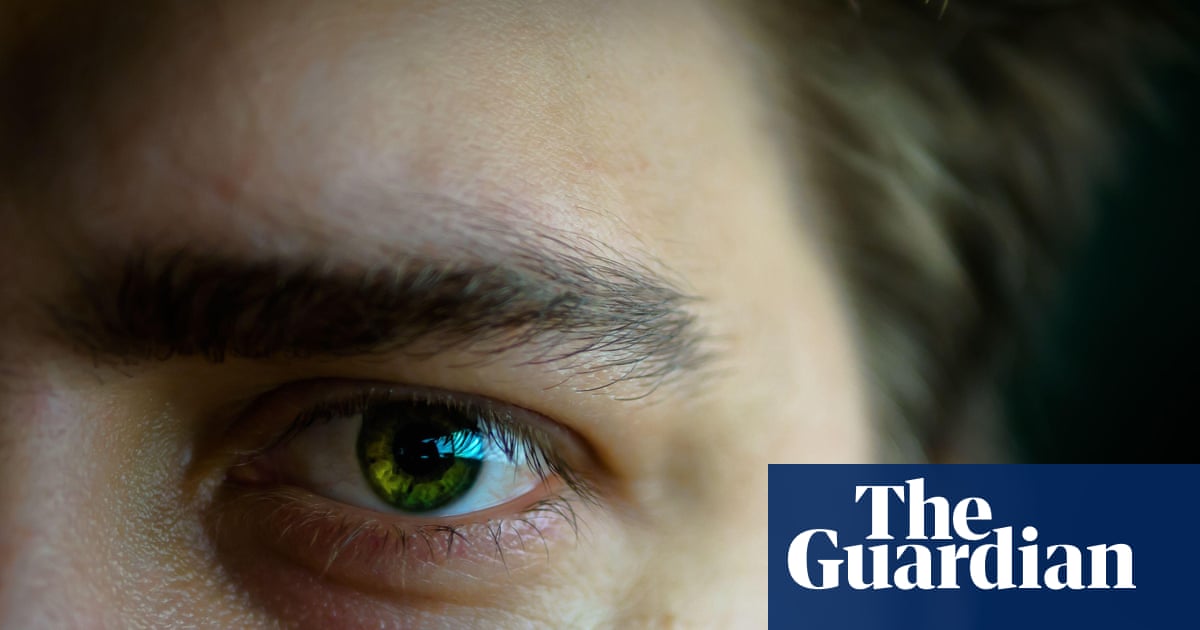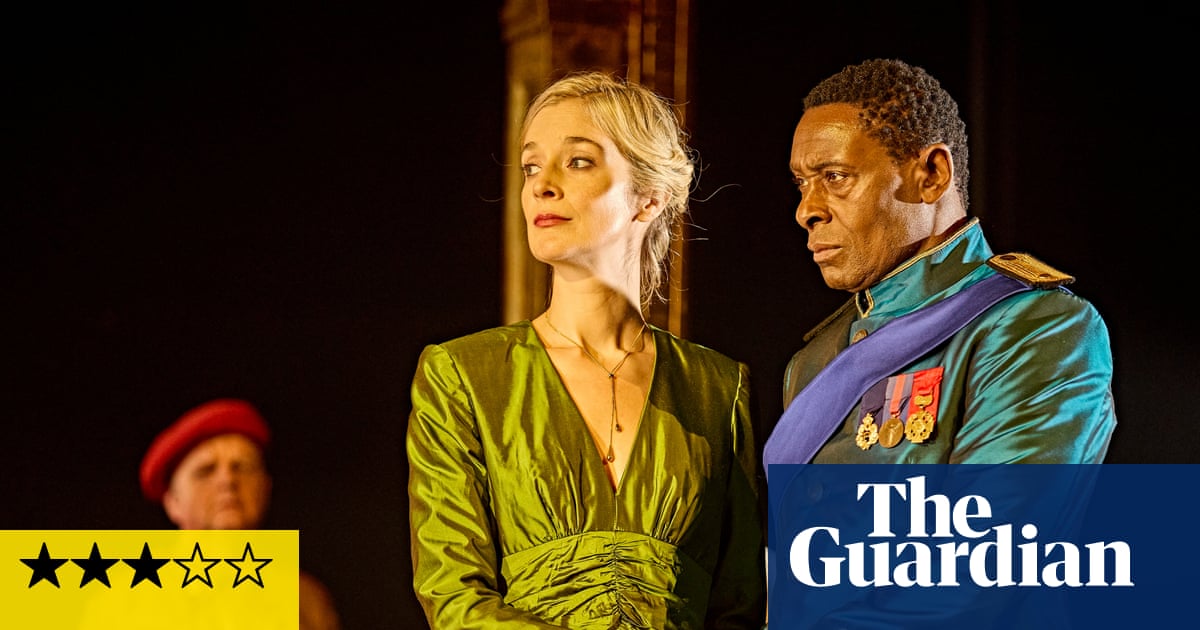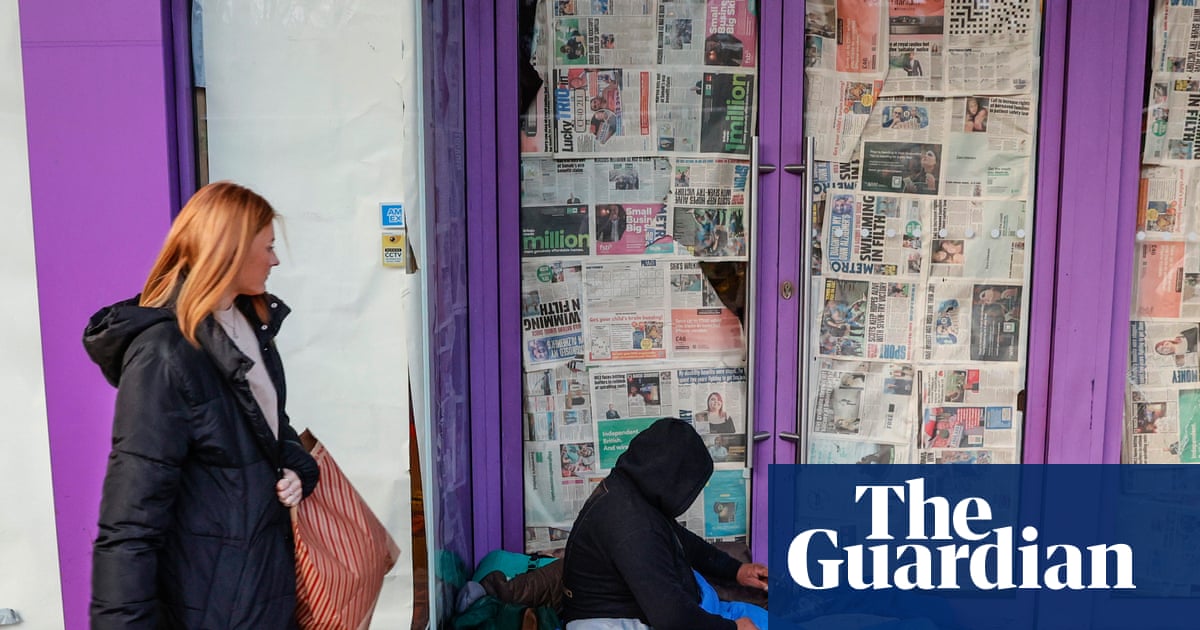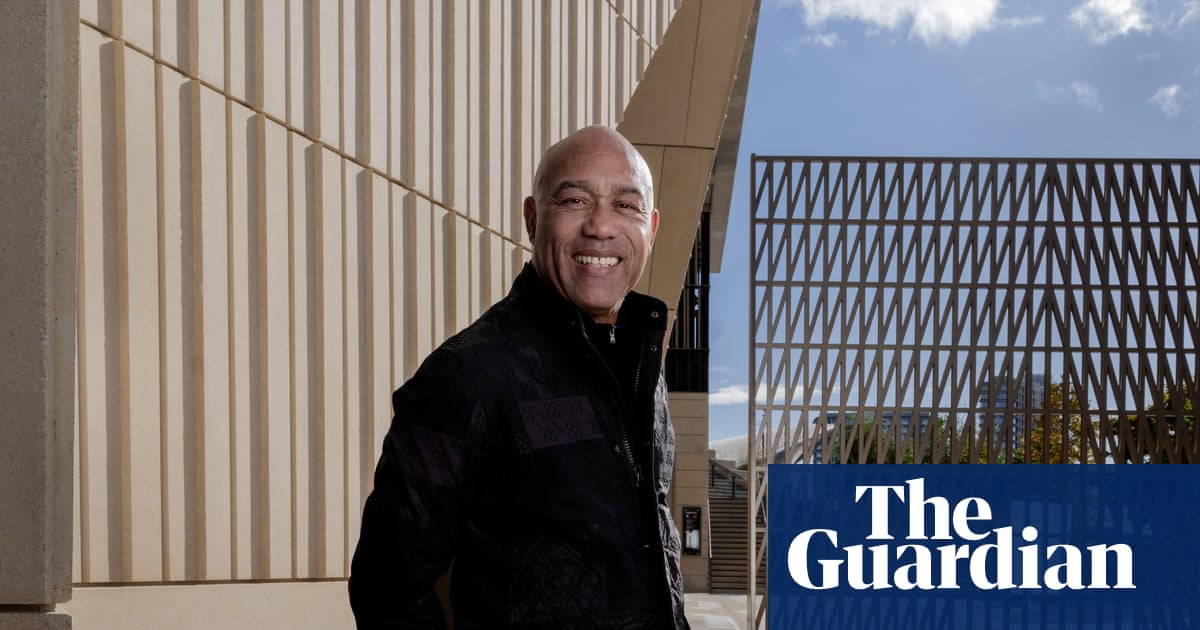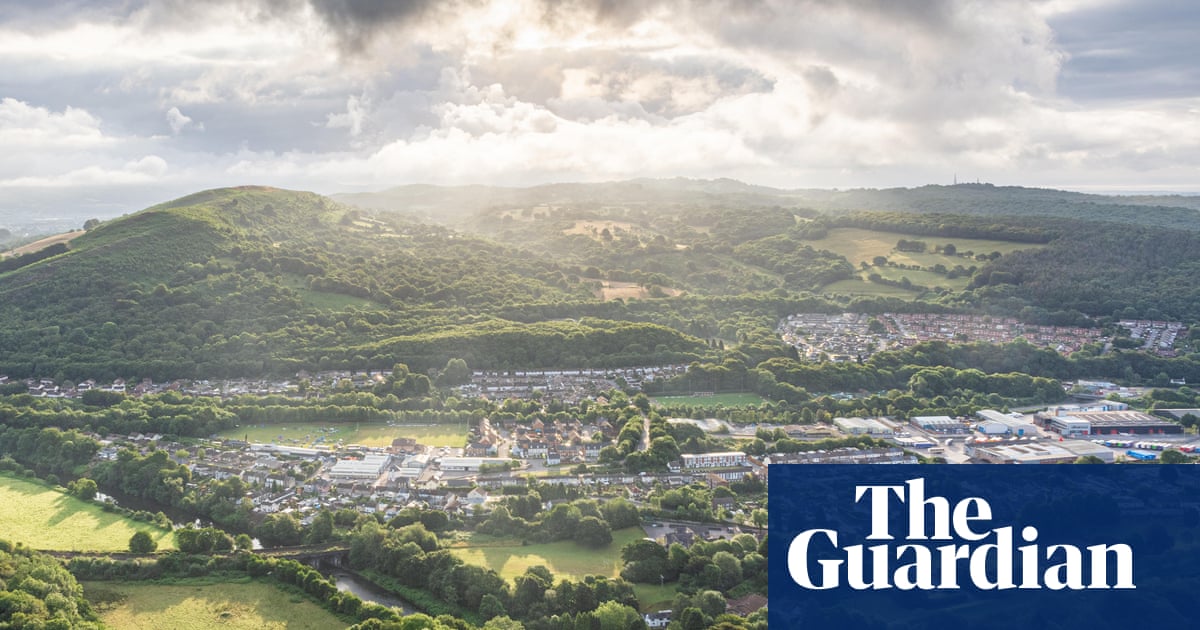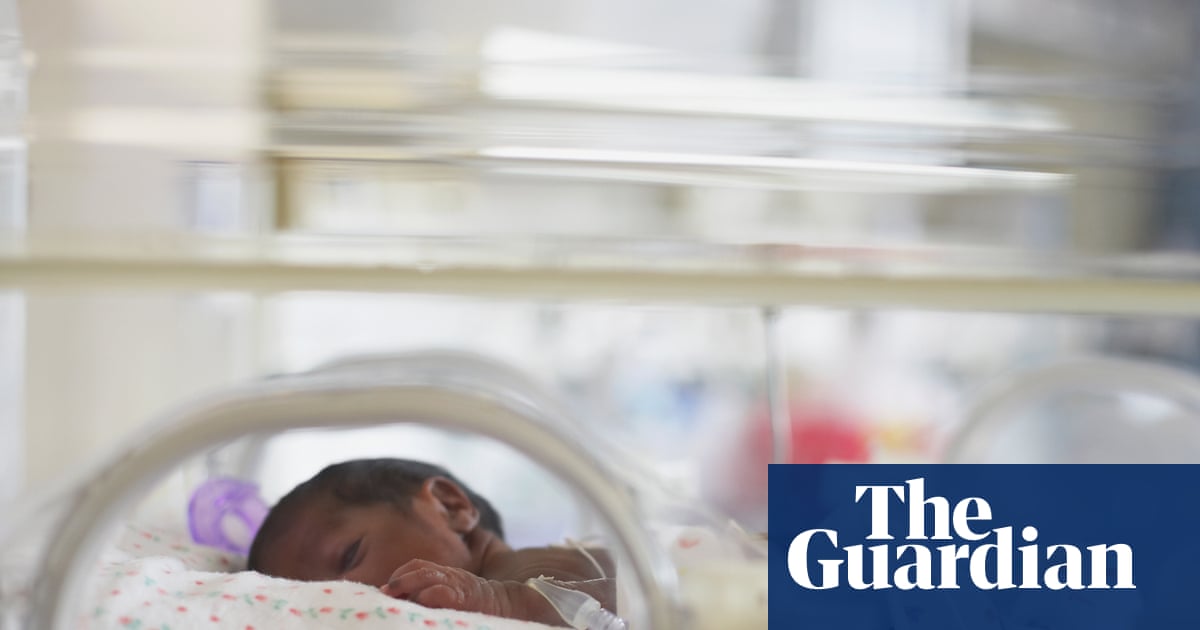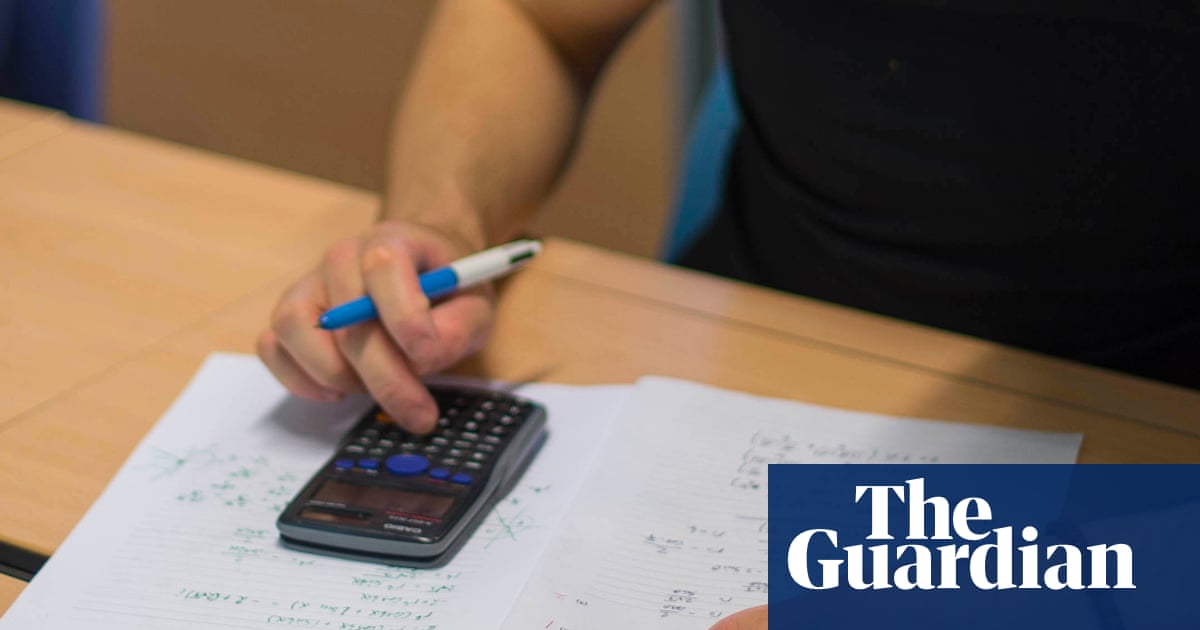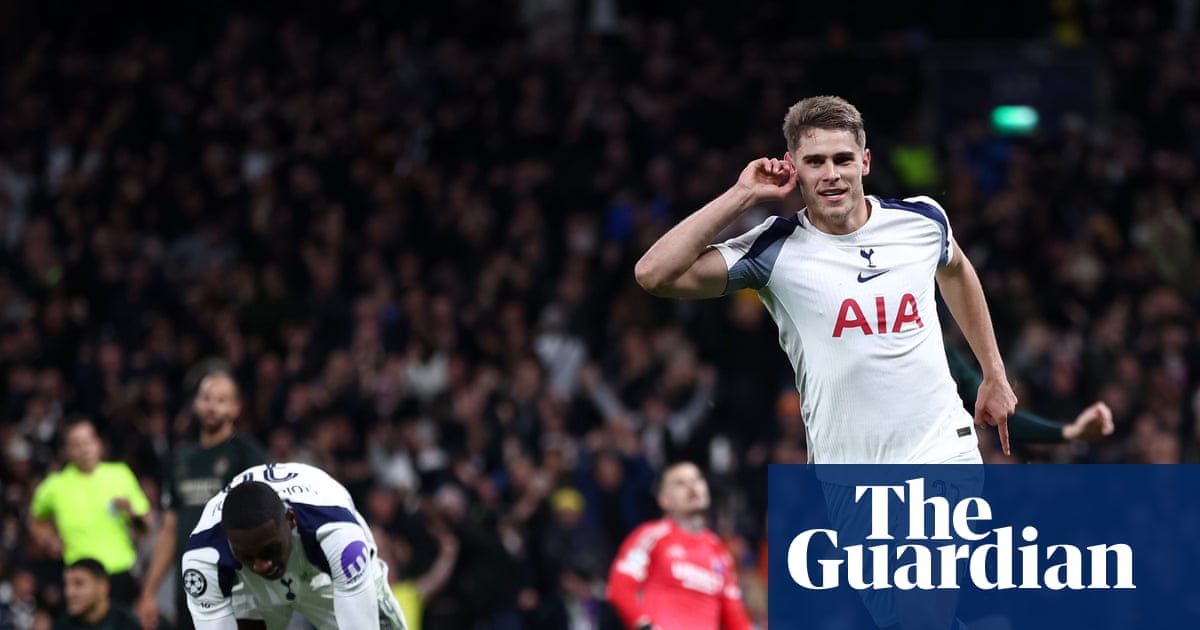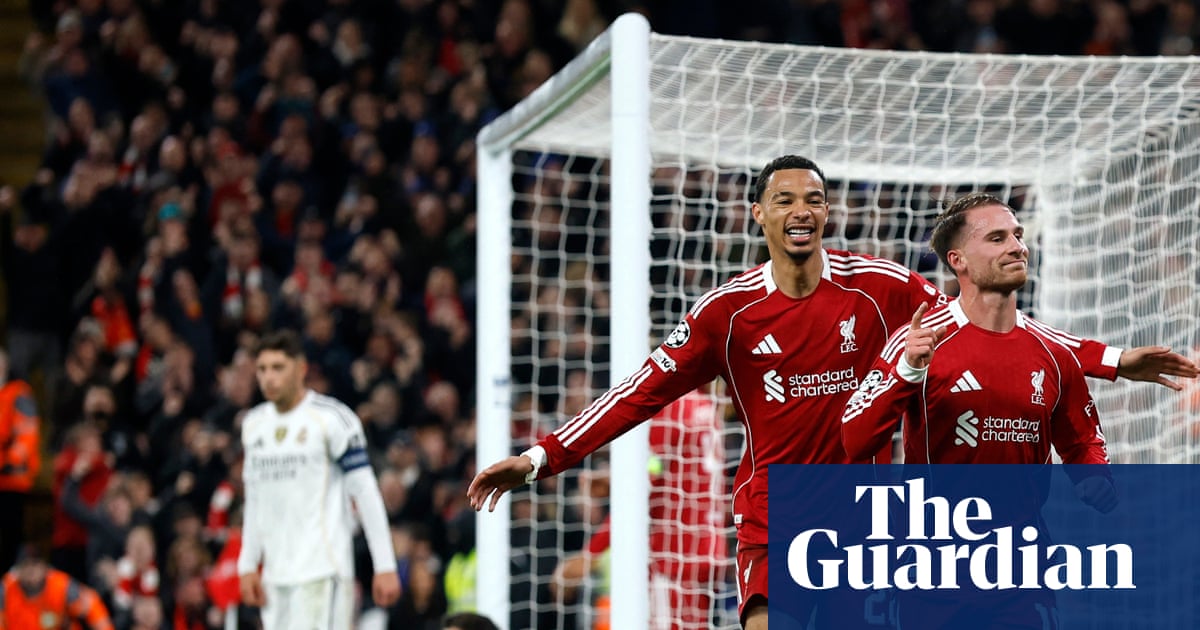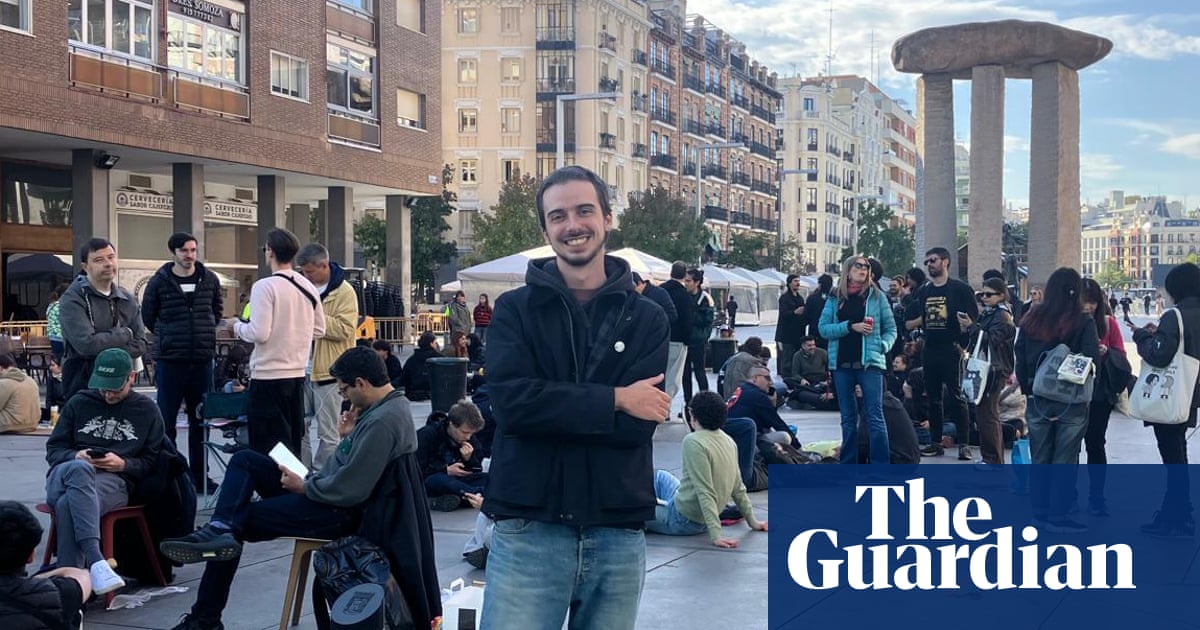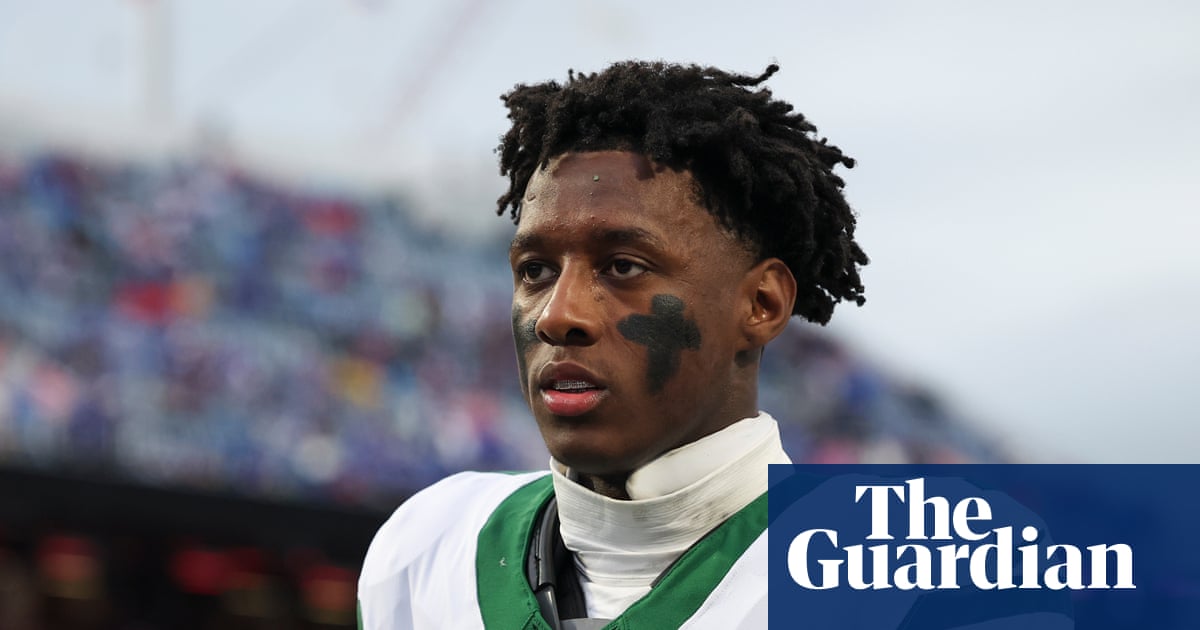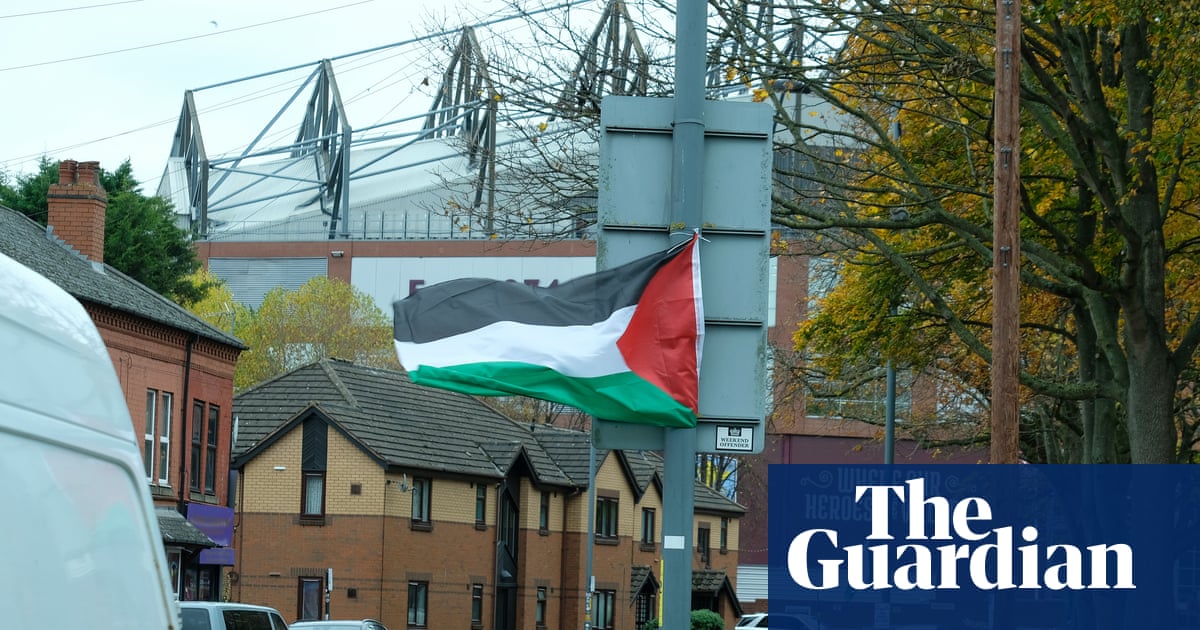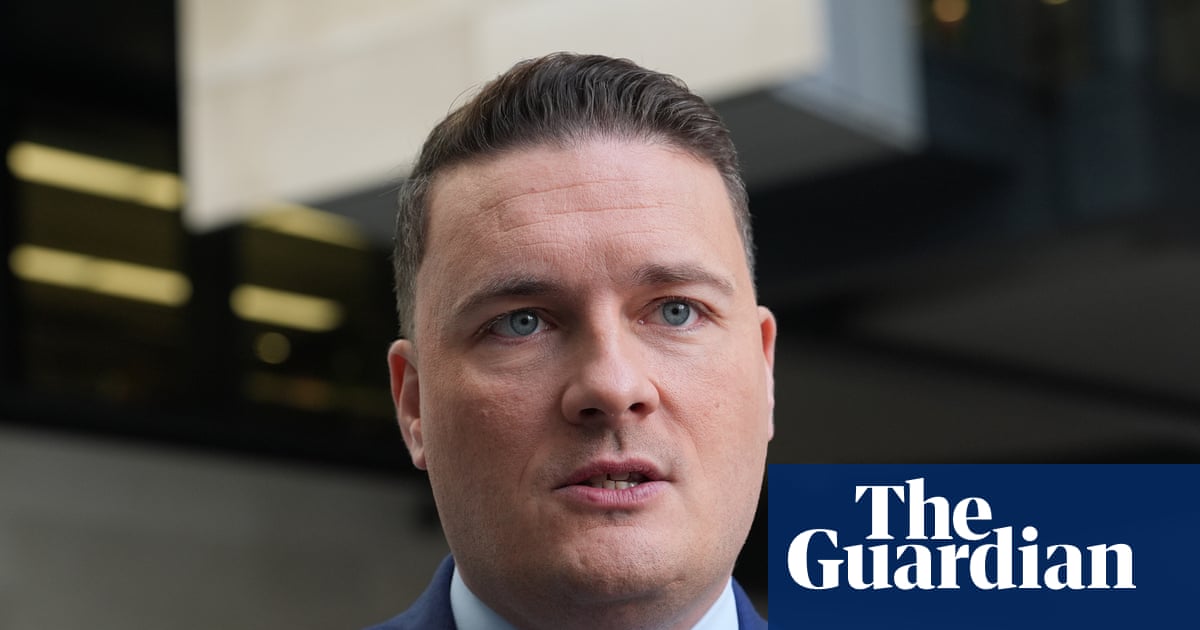Daniel Raab shows no hesitation as he watches footage of 19-year-old Salem Doghmosh crumpling to the ground beside his brother in a street in northern Gaza.
“That was my first elimination,” he says. The video, shot by a drone, lasts just a few seconds. The Palestinian teenager appears to be unarmed when he is shot in the head.
Raab, a former varsity basketball player from a Chicago suburb who became an Israeli sniper, concedes he knew that. He says he shot Salem simply because he tried to retrieve the body of his beloved older brother Mohammed.
“It’s hard for me to understand why he [did that] and it also doesn’t really interest me,” Raab says in a video interview posted on X. “I mean, what was so important about that corpse?”
A five-month investigation by the Guardian, Arab Reporters for Investigative Journalism (ARIJ) and Paper Trail Media, Der Spiegel and ZDF has identified six people shot by Israeli snipers on 22 November 2023. And through interviews with survivors, witnesses and relatives, reviews of death certificates, medical records and geolocated images we revealed how a family from Gaza City’s Tal al-Hawa neighbourhood was torn apart in a few hours by men who grew up in Naperville, Illinois and Munich, Germany.
Israeli snipers killed four members of the Doghmosh family that day, and injured two others. Their story illuminates patterns of killing by Israeli troops, who have repeatedly treated unarmed men between 18 and 40 in Gaza as targets.
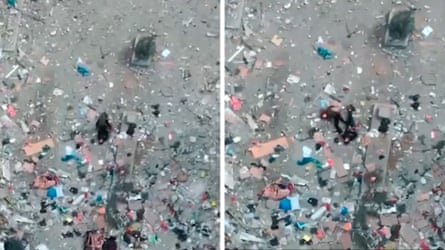
The mass slaughter of tens of thousands of civilians is one factor cited by scholars, lawyers and rights groups who say Israel is committing genocide.
“They’re thinking: ‘Oh I don’t think [I’ll get shot] because I’m wearing civilian clothes and I am not carrying a weapon and all that, but they were wrong,” said Raab, who majored in biology at the University of Illinois before joining the Israel Defense Forces. “That’s what you have snipers for.”
After Salem was shot, his father, Montasser, 51, rushed to the site, and tried to collect his sons’ bodies for burial, but was also fatally injured by a sniper.
The need for a dignified funeral for loved ones is a core human instinct, protected in law and explored in art for millennia. It is at the emotional heart of Homer’s Iliad, one of the earliest surviving works of literature.
But on that day, Raab treated love and grief as cause to kill. “They just kept on coming to try and take these bodies,” he said.
The video of Salem’s killing, and footage of other attacks on unarmed Palestinians, was posted online five months after his death, part of a montage made by a soldier called Shalom Gilbert to celebrate a deployment in Gaza.
Raab later said he and another sniper carried out three of those killings, in an interview carried out under deceptive circumstances by a team led by the Palestinian journalist and activist Younis Tirawi.
Raab was approached by a Hebrew speaker who claimed he wanted to write about the squad’s experiences and to commemorate fallen soldiers, Tirawi said. Raab was promised anonymity, but Tirawi posted extracts of the interview online, justifying the decision by saying it was in the public interest, given the scale of civilian killings.
Raab did not name his partner, who was later identified from photos as Daniel Graetz.
Raab and Graetz did not respond to requests for comment on the shootings, sent over several months by journalists working on the investigation.
The Doghmosh family’s tragedy unfolded on a short stretch of Moneer al-Rayyes Street in Gaza City, near the Barcelona Garden park.
Residents knew Israeli forces were in the area, but on the morning of 22 November 2023 the sound of someone chopping wood in the street reassured locals there wasn’t active combat in the area. It was a false sense of security.
When Mohammed Doghmosh set off towards the park with a cousin, Raab and Graetz were already in place.
The men were part of a sniper team whose members called themselves refaim, or ghost. They had no connection to an elite official special forces unit also known as Refaim.
Many members of the unit were dual nationals, and photos and videos of their operations posted online have helped human rights organisations alert prosecutors in Belgium and France to suspected war crimes by unit members.
Raab and Graetz’s location has been traced from photos and videos taken by Israeli soldiers showing the two snipers aiming their weapons through a window and a hole in the wall. Using satellite imagery, the investigative team geolocated that site to a six-storey building about 400 metres from the killings.
The position gave a clear view of Moneer al-Rayyes Street. A Palestinian journalist working on the investigation visited the buildings and found further evidence of the “ghost” snipers’ presence: graffiti showing the number 9 with devil’s horns and a tail – the squad’s unofficial logo.
The reporter, who also interviewed the Doghmosh family, asked not to be named because Israel has killed at least 189 journalists in Gaza.
Mohammed, who was 26 when he was killed, had a high school diploma and supported the family by gathering waste metal and plastic for resale. Salem had dropped out after 10th grade and joined him.
Fayza Doghmosh recognised her two sons – Salem’s olive-green shirt, Mohammed’s black clothes – when she was shown Gilbert’s footage. She cried uncontrollably as she watched, 18 months after her boys were killed.
Mohammed, who loved chicken wings and helped his mother knead dough for family bread each day, was the first to head out. He picked up his cousin Youssef* at his home nearby, and the two men headed out.
His last moments may have been filmed by Israeli forces. Gilbert’s montage includes two grainy videos of targeted killings. Youssef says he recognises himself, walking with his hands in his pockets beside Mohammed, his lifelong friend.
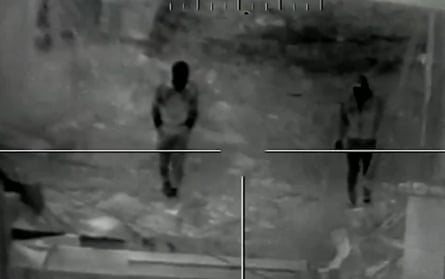
Raab describes that video as Graetz’s “second elimination”, in their first days in Tal al-Hawa. Graetz, who grew up in Munich, can be seen in Gilbert’s video, and his identity was confirmed by facial recognition technology and interviews with former classmates.
Aspects of the video raise questions about whether it shows this shooting, however. Weapons experts who examined it were divided over whether a projectile visible in several frames was a bullet from a sniper rifle. The images show a man hit in the back, while Youssef says Mohammed was shot from the front.
But if what Raab and Mohammed’s relatives say is true, Graetz appears to have killed Mohammed because he was in the wrong place at the wrong time. Neither man was carrying a weapon.
In November 2023 Israeli forces operating in the area decided that section of Moneer al-Rayyes Street was off-limits to civilians, without notifying Palestinians. Raab described it as a “combat zone” where any man of military age was “marked for death”.
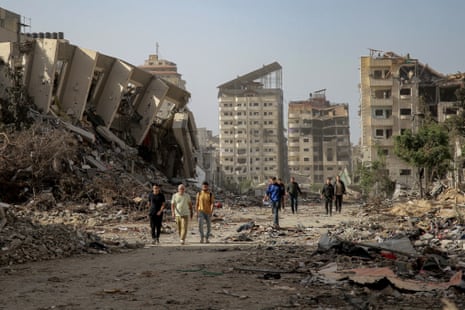
Establishing an invisible “security perimeter” then shooting civilians who cross it has become common practice in Gaza, Israeli soldiers have testified.
When asked how his squad decided whether to shoot unarmed Palestinians, Raab said: “Its a question of distance. There is a line that we define. They don’t know where this line is, but we do.”
The Fraunhofer Institute for Secure Information Technology examined the videos containing the most critical statements and found “no indication” to suggest the content had been altered.
After Mohammed was killed, Youssef ran to tell his brothers, inadvertently sealing Salem’s fate. Raab describes on camera how he shot the teenager when he came to collect Mohammed’s body.
The recovery of dead bodies is protected under international law. The Israeli military’s own regulations also stipulate that people collecting bodies are not legitimate targets, according to former soldiers and Asa Kasher, who co-authored the Israeli Defense Forces’ ethics code.
“If you see someone recovering a body or helping a wounded person, that’s a rescue operation, it should be respected,” Kasher said. “Someone like that should not be shot.”
The next victim was Salem and Mohammed’s father, Montasser. “My boys,” was all he could say when he saw them lying dead in the street. He tried to approach them and was shot.
Then, snipers targeted a cousin, Khalil*, who raced to help Montasser. “I had taken about eight to 10 steps carrying him when I was shot and it felt like my arm was blown off,” said Khalil, who managed to stagger out of range before losing consciousness.
The two men were taken to hospital, but Montasser died the next day. The family decided they could not risk more loss, and the brothers’ bodies were left in the street until a ceasefire began on 24 November.
“Anyone who came close got shot,” said Khalil. He still struggles with the damage from bullets that struck his torso just below his armpit, with such force he initially thought his arm had been severed. “If I walk a little, I get tired. If I work, I get tired.”
There is no video of his shooting but Raab describes someone from his squad hitting a Palestinian near the brothers’ bodies, causing a severe arm injury. “It really knocked away his arm, and we assumed he wouldn’t survive,” he said.
The attacks match a pattern described by a former Israeli reservist, who told the Guardian that soldiers he served with in Gaza repeatedly shot unarmed Palestinians trying to collect bodies.
“It’s something I saw myself,” he said, adding that these killings often came after a first unarmed individual was targeted for crossing an invisible “security perimeter”.
“Once he has been declared an enemy before he has been shot, then the assumption is that everyone going to collect him is his co-conspirator,” added the former reservist, who refused to return to Gaza on the grounds that the war had become “immoral”.
Mohammed, Salem and Montasser were not the only members of their wider family shot near Barcelona Garden that November day.
Mohammed Farid, 47, a distant cousin of the Doghmosh brothers, lived on Moneer al-Rayyes Street. He had evacuated his family to a less exposed building earlier in November but wanted to check if their home had been damaged. Walking back he bumped into another cousin, Jamal*, finishing a similar errand, and they continued together.
As they reached the corner of Jamal’s street, a few metres from his home, Farid was shot. Jamal’s wife, Amal*, watched in horror as Farid crumpled to the ground and her own husband raced for cover.
In the Gilbert video, there is a third clip showing a killing, which Raab also identifies as the work of his partner, Graetz.
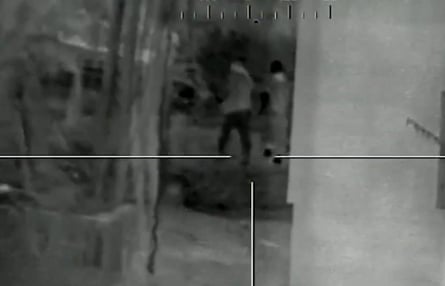
Footage shows two men walking away from the camera down a street filled with rubble. Neither appears to be carrying a weapon. A shot rings out, one man falls to the ground and the other scrambles to get out of the line of fire.
Witnesses including Farid’s immediate family and his cousin Jamal identify the victim as Farid, citing his distinctive durag-style head covering. He was taken to hospital, but declared dead within half an hour.
Raab says Israeli snipers shot eight people in two days near the Barcelona Garden park. Six of them were most likely from the Doghmosh family. Mohammed and Salem, their father, Montasser, and Mohammed Farid were killed, and two cousins were injured. There were also two unidentified bodies in the area at the time, witnesses and survivors say.
In total, Raab says his “team” had killed 105 people by the time his deployment in Gaza ended. “That’s really impressive,” he said of the toll.
The Israeli military did not respond to specific questions about the killings of the Doghmosh family or rules of engagement, including the shooting of civilians recovering bodies. A spokesperson said its forces operated “in strict accordance with its rules of engagement and international law, taking feasible precautions to mitigate civilian harm”.
International law protects unarmed individuals and the collection of bodies. The shootings on Moneer al-Rayyes Street appeared to violate that, experts said. “The available evidence points to a war crime,” said Tom Dannenbaum, a professor of international law at Stanford law school.
Nearly two years after the shootings, surviving Doghmosh family members have more hope in divine justice than human courts. Fayza remembers standing by her house when they brought the bodies of her two sons to her. Of Raab, she says: “Even if I forgive him, God will not.”
* The names of survivors and witnesses have been changed due to security concerns
Reporting team: Maria Retter, Daniel Laufer, Frederik Obermaier, Maria Cristoph (Paper Trail Media)

 1 month ago
65
1 month ago
65

